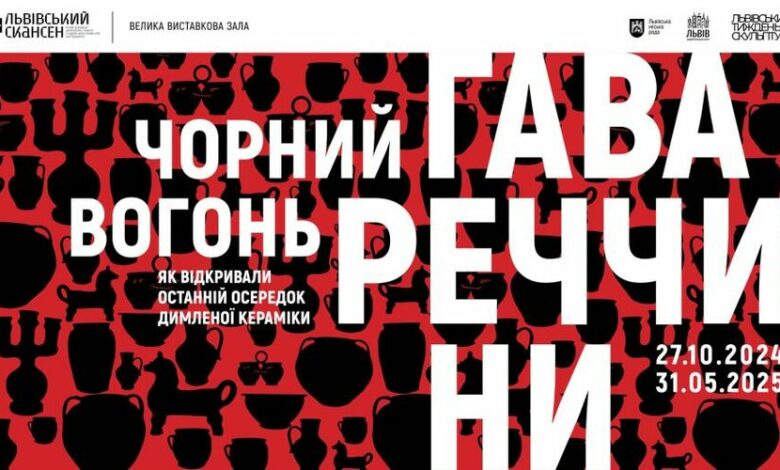
On Sunday, a large-scale exhibition exploring the phenomenon of Havarets ceramics will open in Lviv Skansen. The opening will take place as part of the Lviv Sculpture Week.
The exhibition “Black Fire of Havarechchyna” is an attempt to trace and tell the story of the “discovery” of one of the last centres of black-smoked ceramics through the works, memories and photographs of people involved in the revival of Havarechyna craft.
The exhibition features iconic works by Havare masters of the late 19th and early 21st centuries, as well as works of art and documents kept in the collections of the Klymentii Sheptytskyi Museum of Folk Architecture and Rural Life in Lviv, the Museum of Ethnography and Art Crafts of the Institute of Ethnology of the National Academy of Sciences of Ukraine, the Andrii Sheptytskyi National Museum in Lviv, the Vasyl Stefanyk Lviv National Scientific Library of Ukraine, the Museum of the Ukrainian Catholic University, and private collections.
A special place at the exhibition is occupied by the works of the family of Lviv artists – Yaroslav, Yaroslava and Mariana Motyk, who were among the first to adopt the technology and start working with Havre ceramics.
The exhibition will open on Sunday, 27 October, at 15:00 in the large exhibition hall of the Lviv Skansen (1 Chernecha Hora St.).
We remind you that you can enter the museum through the ticket office in the new information and education centre.
For reference.
The last major exhibition of Havare ceramics took place back in 1988 at the Museum of Ethnography and Arts and Crafts in Lviv. At that time, it was an initiative of young people who rallied around the Lion’s Society and set out to draw attention to one of the last centres of black-smoked ceramics in Ukraine. In addition to the exhibition, the Lion’s Society also organised a charity fair in Bernardine’s Courtyard and later initiated the creation of a pottery school in Havarechchyna, which was run by ceramic artist Yaroslav Slyvinsky from 1988 to 1992.

